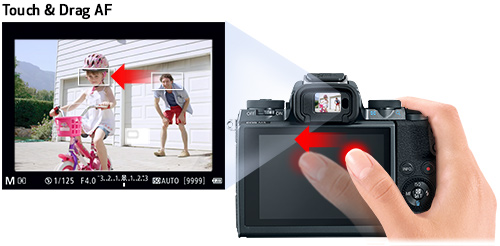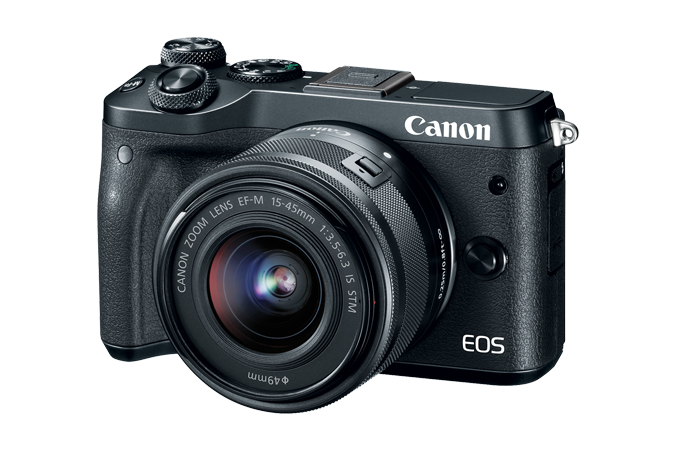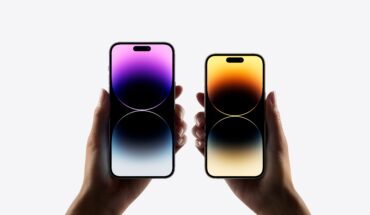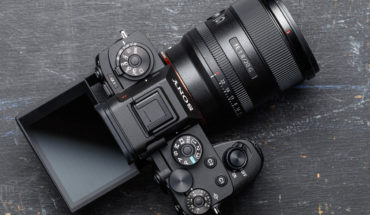
Canon EOS 5D Mark IV
The Canon EOS 5D Mark IV has been announced and is expected to hit the streets in early September! This review page will be updated as more information becomes available/is clarified and, when my camera arrives, a full review will be completed at a high priority
As with all EOS 5-Series models before it, the Canon EOS 5D Mark IV arrived to great fanfare and a strong demand.
The Canon EOS 5D series is arguably one of the most recognizable camera lines of the digital age and the Mark IV is designed to appeal to the same wide range of enthusiasts and professionals. Nearly identical-looking to its predecessor, it receives substantial upgrades under the hood, including: a higher-resolution sensor with Dual Pixel autofocus, 4K video capture, an upgraded AF system, a touchscreen, improved weather-sealing, built-in Wi-Fi/NFC, an interval timer and GPS. All this adds up to a camera that fits into Canon’s product line nicely as the all-around full-frame option.
It is built around a new 30.4MP CMOS sensor and uses the Digic 6+ processor. The AF system is from the flagship 1D X Mark II and contains 61 AF points (41 of which are cross-type) with up to 24% expanded vertical coverage compared with the system in the Mark III. The center point is sensitive to -3EV in One Shot (AF-S) mode (in Live View the sensor is sensitive to -4EV with a fast lens).
4K video capture is a welcome addition to this camera and users can record in either 24 or 30p, albeit with a 1.64x crop. All footage is captured as Motion JPEG. Additionally, the camera allows for 4K Frame Grabs, effectively giving users 30 fps stills shooting with (Dual Pixel) AF. The usefulness of this may depend on how well-controlled the camera’s rolling shutter is, and how acceptable 8.8MP, ~17:9 JPEGs are to you, but we’ve been impressed by how effective 4K/60p video capture on the 1D X II has been for capturing the decisive moment still.
Summary of Canon EOS 5D Mark IV Specifications
- 30.4 Megapixel Full Frame CMOS Sensor
- 7 fps continuous shooting and silent shutter mode
- 4k 30fps video with 8.8 mp still frame grab, Full 1080p HD 60 fps
- Dual Pixel CMOS AF for responsive and smooth AF during video or Live View shooting
- Dual Pixel RAW
- Built-in GPS
- Built-in WiFi, NFC (Near-Field Communication)
- 3.2″ (81.1mm), approximately 1,620,000 dot Clear View II LCD monitor with full touch-screen interface, including selection of AF area
- DIGIC 6+ image processor
- 61-point High-Density Reticular AF II system (like 1D X Mark II) including up to 41 cross-type AF sensors, with EOS iTR, f/8 AF
- AF sensitivity in low light is EV-3 and EV-4 when in Live View mode
- 150,000-pixel RGB+IR, 252 zone metering sensor for improved precision
- Zone, Spot and AF Point Expansion focusing modes
- ISO 100-32000 with expansion to 102400, 50
- Short 58ms shutter lag
- Flicker Mode adjusts shutter release timing to avoid flickering light issues
- Dual Memory Card Slots supporting one CF (UDMA Mode 7) and one SD/SDHC/SDXC (UHS-I) memory card
- HDR shooting in-camera
- Upgraded Transparent LCD viewfinder with 100% coverage
- Dual-Axis Electronic Level with dedicated viewfinder display
- Time-lapse Movie function
- EOS Integrated Cleaning System (EICS)
- Peripheral Illumination, Chromatic Aberration, Distortion and Diffraction Lens Correction in-camera
- Magnesium alloy body, Shutter durability rated up to 150,000 cycles, dust and weather resistance
- Mirror Vibration Control System to reduce mirror vibration blur
- Customizable Quick Control screen
- +/- 5 stops of exposure compensation
- Super Speed USB 3.0 for high-speed tethering and image/movie transfer
- In-camera Multiple Exposure and HDR modes, HDR 30 fps video
- Improved custom controls with built-in Intervalometer and bulb timer
Compared to its peers
Canon now offers a range of full-frame models. On the high end you have the Canon’s sports and action-oriented 1D X Mark II, with its 20.2MP sensor and 14 fps continuous shooting (with AF). The 5DS (and ‘R’ variant), with their 50.6MP sensors, are the company’s high resolution options. The 5D Mark IV splits the difference in terms of resolution and is positioned as Canon’s all-rounder. For those on a budget, the compact EOS 6D soldiers on, four years after its introduction.
So how does the 5D Mark IV stack up against its closest sibling and predecessor? Take a look for yourself:
| Canon EOS 5D IV |
Canon EOS 5D III |
Canon EOS 5DS |
|
|---|---|---|---|
| Sensor | 30.4MP | 22.3MP | 50.6MP |
| ISO range (expanded) |
100 – 32000 (expandable 50-102400) |
100 – 25600 (expandable 50-102400) |
100 – 6400 (expandable 50-12800) |
| AF points | 61 (41 cross-type) over expanded region |
61 (41 cross-type) | 61 (41 cross-type) |
| Live view/video AF | ‘Dual Pixel’ phase detection | Contrast detection | Contrast detection |
| RGB metering sensor resolution | 150k pixels | 63-zone dual-layer | 150k pixels |
| LCD | 3.2″ 1.62M-dot touchscreen | 3.2″ 1.04M-dot | 3.2″ 1.04M-dot |
| Burst rate | 7 fps | 6 fps | 5 fps |
| Video | DCI 4K/30/24p | 1080/30p | 1080/30p |
| Headphone socket | Yes | Yes | No |
| Card format | 1x Compact Flash 1x SD |
1x Compact Flash 1x SD |
1x Compact Flash 1x SD |
| Built-in Wi-Fi/NFC | Yes | No | No |
| GPS | Yes | No | No |
Sensor and Image Quality
That is changed again with the EOS 5D Mark IV (disregarding the side-stepping 5Ds models), with this camera getting a big, much welcomed upgrade to 30.4 megapixels.
| Model | FOVCF | Sensor | Pixel Size | Pixels/Megapixels | Viewfinder | DLA | ||
| Canon EOS 80D | 1.6x | 22.5 x 15.0mm | 3.7µm | 6000 x 4000 | 24.2 | .95x | 100% | f/5.9 |
| Canon EOS 7D Mark II | 1.6x | 22.4 x 15.0mm | 4.1µm | 5472 x 3648 | 20.2 | 1.0x | 100% | f/6.6 |
| Canon EOS 6D | 1.0x | 35.8 x 23.9mm | 6.54µm | 5472 x 3648 | 20.2 | .71x | 97% | f/10.5 |
| Canon EOS 5Ds / 5Ds R | 1.0x | 36.0 x 24.0mm | 4.14µm | 8688 x 5792 | 50.6 | .71x | 100% | f/6.7 |
| Canon EOS 5D Mark IV | 1.0x | 36.0 x 24.0mm | 5.36µm | 6720 x 4480 | 30.4 | .71x | 100% | f/8.6 |
| Canon EOS 5D Mark III | 1.0x | 36.0 x 24.0mm | 6.25µm | 5760 x 3840 | 22.3 | .71x | 100% | f/10.1 |
| Canon EOS 5D Mark II | 1.0x | 35.8 x 23.9mm | 6.4µm | 5616 x 3744 | 21.1 | .71x | 98% | f/10.2 |
| Canon EOS 5D | 1.0x | 35.8 x 23.9mm | 8.2µm | 4368 x 2912 | 12.8 | .71x | 96% | f/13.2 |
| Canon EOS-1D X Mark II | 1.0x | 36.0 x 24.0mm | 6.6µm | 5472 x 3648 | 20.2 | .76x | 100% | f/10.6 |
The 5D Mark IV ‘s 30 megapixels is a significant amount far more than any other EOS cameras to date. Obviously this is a new sensor as Canon has not offered a full frame camera with this resolution prior to now.
File Size and Media
There is no doubt that 30 megapixel files are going to be large For an ISO 100 image, you can typically figure about 1.3MB in RAW file size per megapixel of resolution. So, plan now for your storage requirements.
Image files can be written to a CompactFlash (UDMA 7) and/or a SD/SDHC/SDXC (UHS-I) memory card. Files can be written to both cards simultaneously (for redundancy) or sequentially (for increased capacity).
Battery Canon EOS 5D Mark IV
The Canon EOS 5D Mark IV uses the same LP-E6N Rechargeable Lithium-ion used in recent EOS DSLRs. This is backwards compatible with the slightly lower capacity LP-E6 ones used in the previous 5D series models. With an LP-E6N the camera is rated at 900 shots per charge by CIPA standards or around 300 shots in live view mode. This is a 5% drop compared to the Mark III when shooting through the viewfinder but a 50% increase in live view performance.
As always, these numbers are meant to be comparable, rather than a representation of how many shots you’ll get. 900 shots per charge should be plenty for heavy stills and video use.
Summary
Canon has addressed many of the concerns of 5D-owning stills and video shooters. We expect significant, though not class-leading, improvements in dynamic range that narrow the gap in shadow recover-ability between Canon and Sony sensors. Resolution has taken a reasonable step forward as well. If it isn’t already apparent, we love Dual Pixel AF and are very happy to see its capability extended to stills shooting of moving subjects. In fact, it’s so good we want to use it all the time (save for sports), but alas no hybrid OVF/EVF. The lack of a tilting or articulated LCD limits the utility of the otherwise excellent live view implementation.
| Body type | |
|---|---|
| Body type | Mid-size SLR |
| Body material | Magnesium alloy |
| Sensor | |
| Max resolution | 6720 x 4480 |
| Image ratio w:h | 1:1, 4:3, 3:2, 16:9 |
| Effective pixels | 30 megapixels |
| Sensor photo detectors | 32 megapixels |
| Sensor size | Full frame (36 x 24 mm) |
| Sensor size notes | sRaw suppoorted in all aspect ratio. Size between 5 and 7.5 megapixel. |
| Sensor type | CMOS |
| Processor | Digic 6+ |
| Color space | sRGB, AdobeRGB |
| Color filter array | Primary color filter |
| Image | |
| ISO | Auto, 100-32000 (expands to 50-102400) |
| Boosted ISO (minimum) | 50 |
| Boosted ISO (maximum) | 102400 |
| White balance presets | 6 |
| Custom white balance | Yes |
| Image stabilization | No |
| Uncompressed format | RAW |
| JPEG quality levels | Fine, normal |
| File format |
|
| Optics & Focus | |
| Autofocus |
|
| Autofocus assist lamp | Yes |
| Manual focus | Yes |
| Number of focus points | 61 |
| Lens mount | Canon EF |
| Focal length multiplier | 1× |
| Screen / viewfinder | |
| Articulated LCD | Fixed |
| Screen size | 3.2″ |
| Screen dots | 1,620,000 |
| Touch screen | Yes |
| Screen type | TFT LCD |
| Live view | Yes |
| Viewfinder type | Optical (pentaprism) |
| Viewfinder coverage | 100% |
| Viewfinder magnification | 0.71× |
| Photography features | |
| Minimum shutter speed | 30 sec |
| Maximum shutter speed | 1/8000 sec |
| Exposure modes |
|
| Built-in flash | No |
| External flash | Yes (via hot shoe or flash sync port) |
| Flash X sync speed | 1/200 sec |
| Drive modes |
|
| Continuous drive | 7.0 fps |
| Self-timer | Yes (2 or 10 secs, custom) |
| Metering modes |
|
| Exposure compensation | ±5 (at 1/3 EV, 1/2 EV steps) |
| AE Bracketing | ±3 (2, 3, 5, 7 frames at 1/3 EV, 1/2 EV steps) |
| WB Bracketing | Yes |
| Videography features | |
| Resolutions | 4096 x 2160 (29.97p, 24p, 23.98p), 1920 x 1080 (59.94p, 29.97p, 24p, 23.98p), 1280 x 720 (119.9p) |
| Format | MPEG-4, Motion JPEG |
| Videography notes | 8.8MP stills can be grabbed from 4K video; camera supports ALL-I, IPB and IPB Light compression. |
| Microphone | Mono |
| Speaker | Mono |
| Storage | |
| Storage types | CompactFlash + SD/SDHC/SDXC card (UHS-I enabled) |
| Connectivity | |
| USB | USB 3.0 (5 GBit/sec) |
| HDMI | Yes (mini-HDMI) |
| Microphone port | Yes |
| Headphone port | Yes |
| Wireless | Built-In |
| Wireless notes | 802.11b/g/n + NFC |
| Remote control | Yes (wired, wireless, or smartphone) |
| Physical | |
| Environmentally sealed | Yes |
| Battery | Battery Pack |
| Battery description | LP-E6N lithium-ion battery & charger |
| Battery Life (CIPA) | 900 |
| Weight (inc. batteries) | 890 g (1.96 lb / 31.39 oz) |
| Dimensions | 151 x 116 x 76 mm (5.94 x 4.57 x 2.99″) |
| Other features | |
| Orientation sensor | Yes |
| GPS | Built-in |
Dual Pixel AF is a no-brainer for videographers, making otherwise complex video shoots a one-man job. Dual Pixel Raw is a clever new idea it’s a slice of ‘light field’ technology in a consumer DSLR, which speaks of things to come. Unfortunately, our initial impressions of this iteration are poor: actual re-focusability is extremely limited, and unlikely to be of real practical use .
Our largest concerns are around whether or not the 5D IV will be seen as a serious video tool for years to come, due to its Motion JPEG limitation and lack of Clean HDMI output in 4K (not to mention its 1.64x crop), as well as its lack of video support tools like zebras and Log gamma. The extremely high bitrates and CF card requirements may steer many towards shooting 1080p, which we’d expect is soft-as-usual. Finally, we wish Canon’s viewfinder AF were more versatile and less situation-specific, capable of following subjects around the frame as well as its own Dual Pixel AF system. But none of this detracts from the solid improvements and innovative features this iteration brings, one that will surely be a workhorse camera for many in the years to come.
We’ll be diving deep into the features and performance of the 5D Mark IV once one arrives at our offices. Stay tuned and, in the meantime, share your thoughts and opinions in the comments below.
Picture

Compared to the Mark III

Canon EOS 5D Mark IV in Hand

Back of 5D MARK IV Camera






